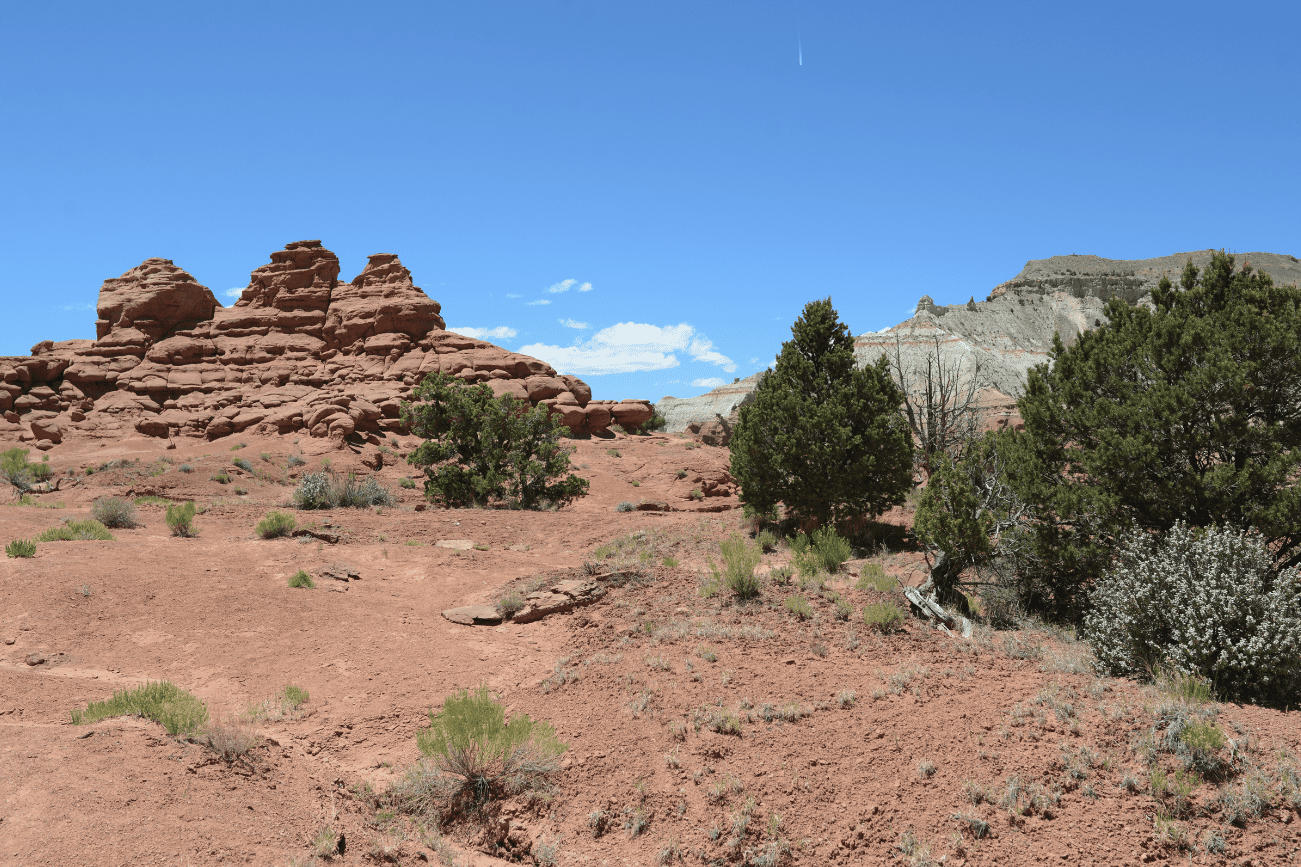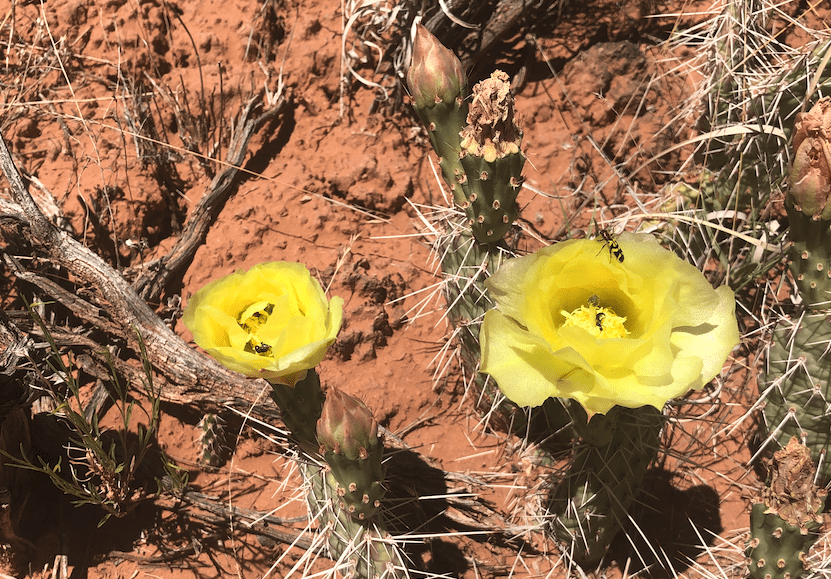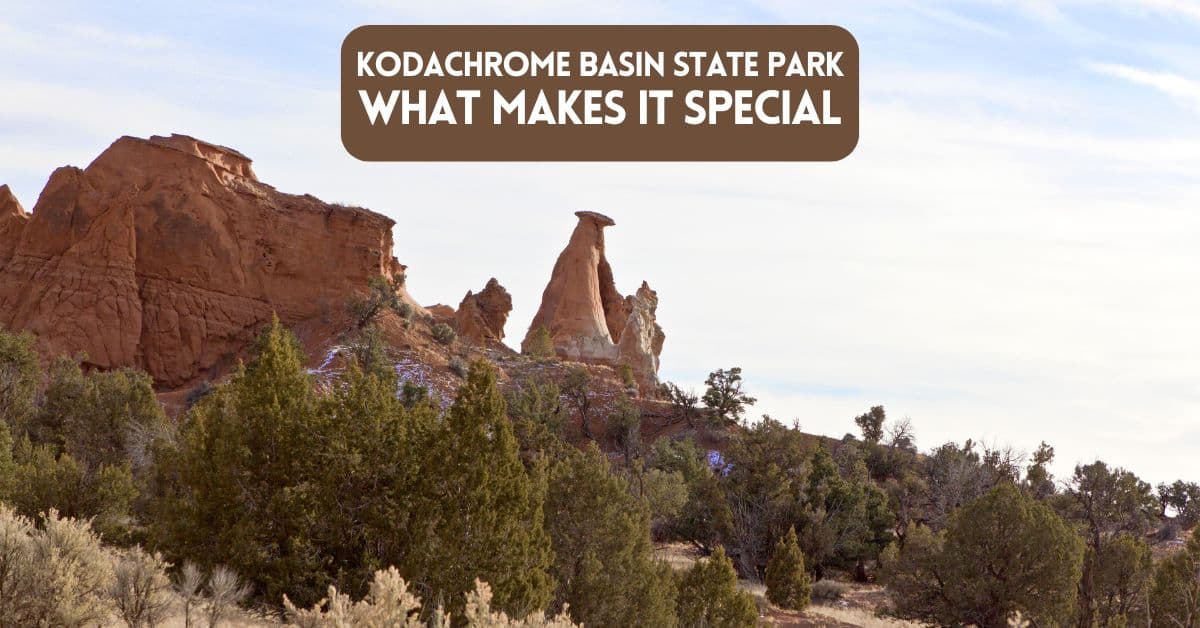What Makes Kodachrome Basin State Park Special?
Kodachrome Basin State Park, located in southern Utah, is a geological wonderland with a unique blend of striking colors, unusual formations, and an otherworldly landscape that leaves a lasting impression on visitors. This post dives into what makes Kodachrome Basin State Park truly special, from its distinctive geology and the fascinating sedimentary pipes to the array of plants and wildlife that thrive in this rugged environment.
The Places Where We Go contains affiliate links and is a member of the Amazon Services LLC Associates Program. As an Amazon Associate, we earn from qualifying purchases at no extra cost to you when you purchase using one of these Amazon links. Read our disclaimer and privacy policy for more information.

Geology: A Layered Landscape
Kodachrome Basin’s landscape has been a brilliant display of geology at work for millions of years. The park’s striking colors and rugged formations reveal multiple layers of sedimentary rock, each representing a different geological period. The layers you see today began forming roughly 180 million years ago during the Jurassic period. Over time, rivers, lakes, and sand dunes deposited sediments that compacted and hardened, creating sandstone, siltstone, and shale layers.
The most visible rock layers include:
- Entrada Sandstone: The Entrada Sandstone, a distinctive red layer, forms the park’s iconic towers and cliffs. It was formed in a coastal dune environment, creating smooth yet sharply defined shapes as the dunes hardened into rock.
- Carmel Formation: Just above the Entrada layer, the Carmel Formation adds a band of light gray, beige, or pinkish rock. This layer formed in a shallow marine environment and is rich with fossils and minerals that give it a unique coloration.
- Dakota Formation: The Dakota layer, consisting of brownish to dark gray sandstone and shale, lies above the Carmel and Entrada formations. It was deposited in riverbeds and is dotted with fossilized plant material, giving insight into ancient ecosystems.
- Henrieville Sandstone: Dating back to the end of the Jurassic Period, this is a white-to-tan geological formation found within Kodachrome Basin State Park. While these sandstone deposits are not prominently visible within the main park area, they become significant at Grosvenor Arch, about 11 miles south. This striking natural arch was formed from the Henrieville Sandstone, highlighting the unique geological features of the region.
These sedimentary layers make Kodachrome Basin an open geology textbook, allowing visitors to trace millions of years of Earth’s history in a single landscape.
Get Free Weekly Travel News Updates

The Enigmatic Sedimentary Pipes
One of the park’s most intriguing features is its sedimentary pipes—tall, chimney-like columns that stand out against the surrounding rock formations. Nearly 70 of these sedimentary pipes are in Kodachrome Basin, ranging from a few feet to over 150 feet tall. Geologists still debate their origins, adding a layer of mystery to their appeal.
Theories about their origin include:
- Ancient Geysers Theory: One popular theory suggests that these sedimentary pipes formed as ancient geysers or springs ejected water and sediment. As the water evaporated or drained away, the sediment left behind gradually solidified, creating these towering columns.
- Sedimentary Compaction Theory: Another theory posits that the sedimentary pipes formed due to extreme pressure within sediment layers. Over time, the compacted material became harder than the surrounding rock, eventually eroding slowly and standing as pillars.
- Water-Saturdated Pockets: A recent theory suggests that the sandpipes at Kodachrome Basin State Park formed due to water-saturated pockets buried beneath layers of sediment over millions of years. The pressure from these sediments pushed the wet slurry upward, which carved paths through the overlying rock layers. Over time, this slurry hardened into rock, and subsequent erosion removed the softer rock layers, revealing today’s unique sandpipe formations.
Regardless of their origins, these pipes are a distinctive hallmark of Kodachrome Basin and one of the main draws for visitors.

Flora: Adaptations in an Arid Landscape
Kodachrome Basin’s plant life is uniquely adapted to the dry, rocky environment of the Colorado Plateau. The flora here consists mainly of hardy desert plants that can withstand the arid conditions, intense sun, and high elevation.
Some of the notable plant species include:
- Juniper and Pinyon Pines: These trees dot the landscape, providing shade and resilience in harsh conditions. Junipers and pinyon pines are highly drought-tolerant, with deep roots that enable them to reach groundwater.
- Cacti and Yuccas: Various species of cactus and yucca thrive in Kodachrome Basin, showcasing sharp spines and waxy coatings that help them conserve water.
- Rabbitbrush and Sagebrush: These hardy shrubs add texture and color to the landscape. Their silvery leaves and deep root systems allow them to survive with minimal water.
Spring and early summer bring color to the park as wildflowers bloom briefly after rains. These include vibrant desert marigolds, Indian paintbrushes, and asters, contrasting beautifully against the red rock.
Wildlife: Desert Survivors
Kodachrome Basin is home to various wildlife specially adapted to the park’s dry and rugged conditions. Though wildlife sightings are often limited due to the arid environment, visitors may encounter some fascinating species:
- Mammals: Mule deer, coyotes, and small mammals like desert cottontails and jackrabbits are among the park’s residents. These animals are often most active during the early morning or late evening to avoid the midday heat.
- Birds: Raptors, such as red-tailed hawks and American kestrels, are commonly seen soaring above the park. Smaller birds, including black-throated sparrows and canyon wrens, are also prevalent, adding to the park’s diverse avian population.
- Reptiles: Lizards and snakes are familiar sights in Kodachrome Basin. The collared lizard, known for its vibrant colors and impressive agility, is one of the park’s more eye-catching reptiles.
Conclusion
Kodachrome Basin State Park is a must-visit destination for geology enthusiasts, nature lovers, and those drawn to the raw beauty of Utah’s desert landscapes. From its rich geological history displayed in colorful sedimentary layers to the iconic sedimentary pipes that defy easy explanation, Kodachrome Basin is a place of mystery and wonder. Add in the resilient plants and elusive wildlife, and it becomes clear why this park is one of Utah’s hidden gems, offering a quiet but profound connection to the natural world.
Thanks for reading this article. We hope to see you at the places where we go.
Julie & Art
Read More About Kodachrome Basin State Park
Best hikes in Kodachrome Basin State Park
Best time to visit Kodachrome Basin State Park
Kodachrome Basin State Park 3 Day Itinerary

